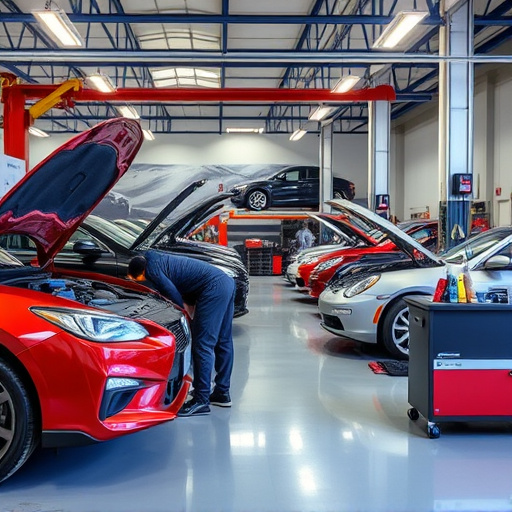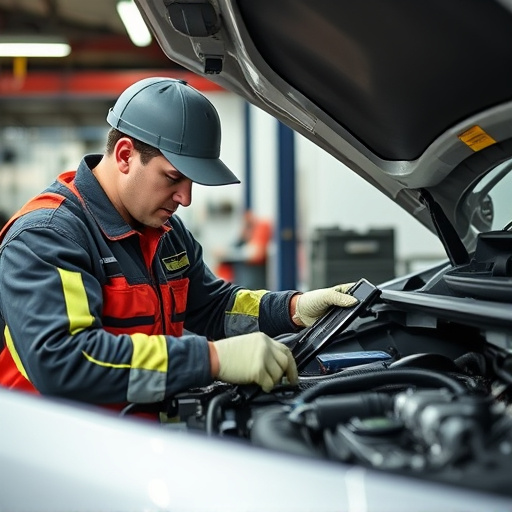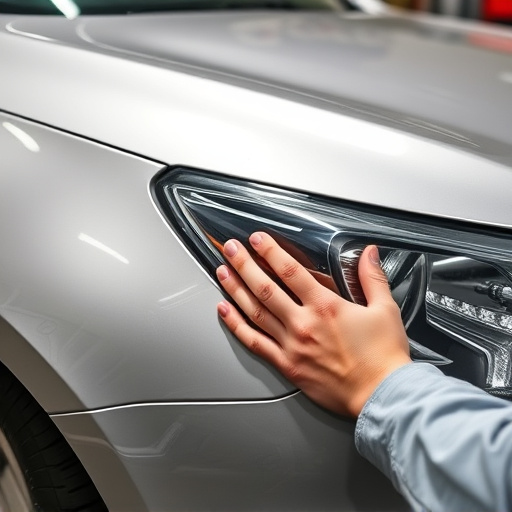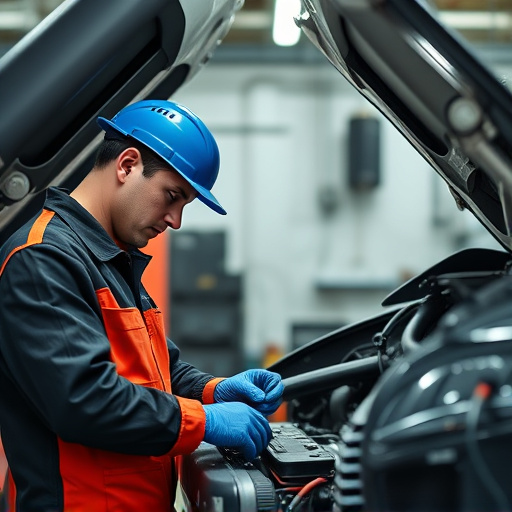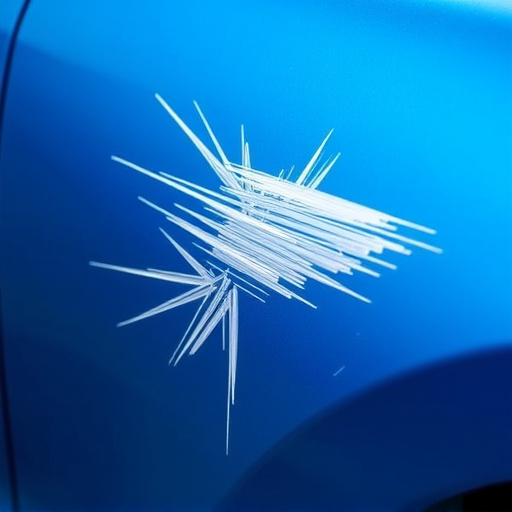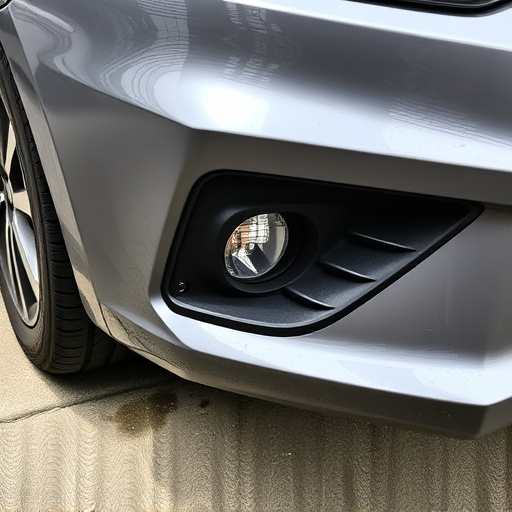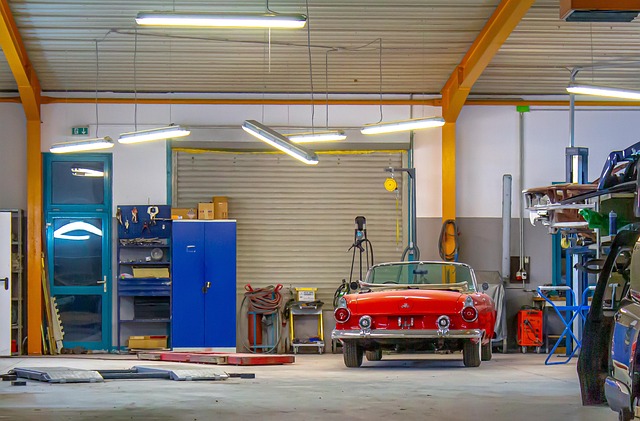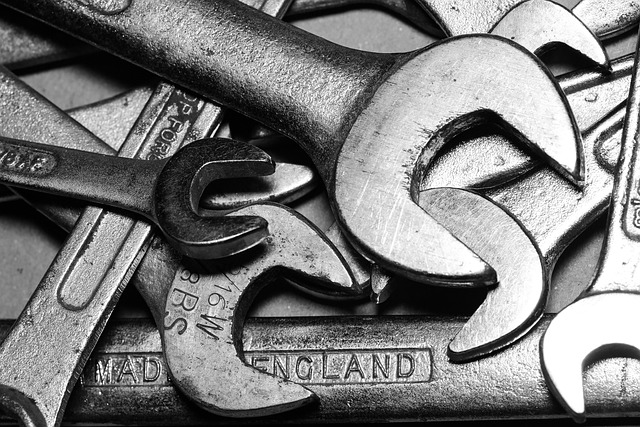Tesla structural integrity repair demands specialized welding techniques and expert auto body knowledge to maintain advanced vehicle designs and materials like steel and alloys. Methods include TIG, MIG, and spot welding, combining precision with efficiency while preserving structural integrity, aesthetics, and EV-specific components for top-quality repairs.
Welding is a critical component of Tesla structural integrity repair work, ensuring the vehicle’s safety and performance. This article delves into the unique challenges and techniques employed in restoring electric vehicles, focusing on Tesla structural integrity repair needs. We explore common welding methods used in auto body repairs and delve into specialized approaches tailored for electric vehicles. By understanding these processes, professionals can effectively maintain the structural integrity of Tesla vehicles, combining precision with advanced materials.
- Understanding Tesla Structure Integrity Repair Needs
- Common Welding Techniques for Auto Body Repairs
- Specialized Approaches in Electric Vehicle Restorations
Understanding Tesla Structure Integrity Repair Needs
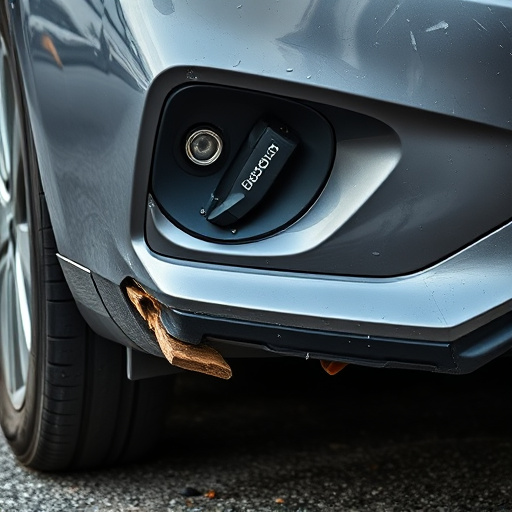
Tesla vehicles are renowned for their cutting-edge technology and sleek design, but like any complex machine, they require meticulous care and specialized expertise when it comes to repairs, especially structural integrity repair. Understanding Tesla’s unique construction and materials is crucial in ensuring that any repair work maintains the vehicle’s original strength and performance.
Tesla structural integrity repair work often involves precision welding techniques to address damage or wear without compromising the car’s overall structure. This includes repairing body panels, chassis components, and frame structures using advanced welding methods. Auto body repair professionals must be adept at handling various materials, from traditional steel to lightweight alloys commonly used in Tesla models. For instance, Mercedes Benz repair techniques can offer valuable insights into precision metalworking, which are highly relevant when addressing Tesla’s sophisticated automotive design.
Common Welding Techniques for Auto Body Repairs
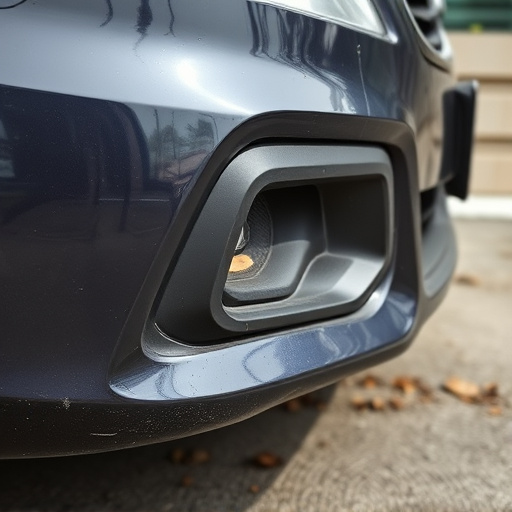
In the realm of Tesla structural integrity repair, understanding common welding techniques is paramount for maintaining vehicle integrity and ensuring a robust fix. Auto body repairs, especially for classic car restoration or Mercedes Benz repair, often require precise and specialized approaches due to the intricate designs and high-quality materials involved. Techniques like TIG (Tungsten Inert Gas) welding are favored for their precision and ability to create strong bonds without affecting surrounding components, making them ideal for delicate Tesla structural repairs. This method is particularly effective for joining dissimilar metals, which is common in modern automotive engineering.
Additionally, MIG (Metal Inert Gas) welding offers a fast and efficient solution, allowing technicians to swiftly address larger areas of damage. Its versatility makes it suitable for both structural integrity repair and auto body services, catering to various vehicle models including classic cars. For intricate or tight spaces, spot welding is employed due to its ability to create strong bonds with minimal heat input, preserving the original structure as much as possible. These techniques, combined with advanced repair methodologies, ensure that Tesla vehicles undergo meticulous restoration processes, maintaining their structural integrity and aesthetic appeal.
Specialized Approaches in Electric Vehicle Restorations
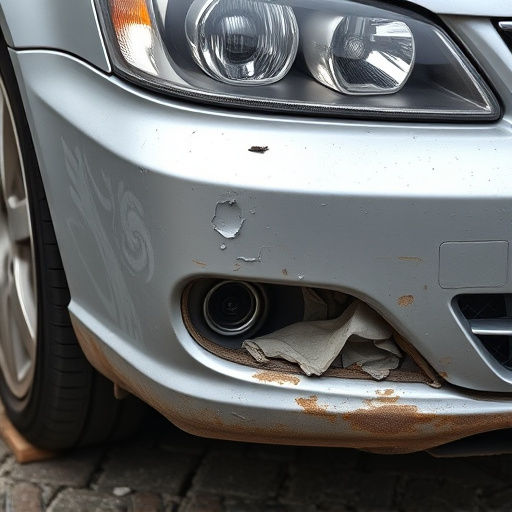
In the specialized realm of Tesla structural integrity repair, unique challenges arise due to the intricate nature of electric vehicles (EVs). As EV technology continues to advance, so do the requirements for restoration work. Traditional welding techniques often need adaptation or replacement to cater to materials and design specifics in modern vehicles. For instance, the use of advanced high-strength steels and lightweight composites necessitates specialized approaches in auto body repairs.
Restoring structural integrity in EVs involves precise handling of these new materials. Specialized welding processes like laser welding and robotic arc welding are increasingly employed to ensure minimal heat input and distortion. These techniques not only preserve the vehicle’s original structure but also enhance its overall performance and safety, which is crucial for maintaining battery systems and electrical components that are integrated into the chassis. Thus, in the context of Tesla structural integrity repair, advanced welding methods play a pivotal role in achieving top-tier auto body repairs.
In the realm of Tesla structural integrity repair, understanding the unique needs of electric vehicle (EV) restorations is paramount. By combining traditional welding techniques with specialized approaches, professionals can ensure robust and safe repairs that maintain the EV’s integral design and performance. Common welding methods, such as MIG and TIG, offer precision and efficiency, while specialized techniques tailored for EVs address the specific challenges posed by advanced materials and intricate designs. As the demand for Tesla structural integrity repair grows, mastering these diverse welding strategies becomes essential for fostering the longevity and reliability of these cutting-edge vehicles.

